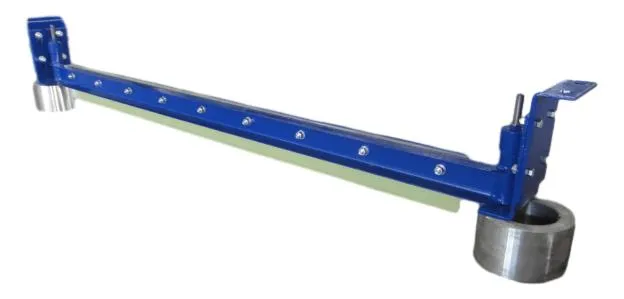 Afrikaans
Afrikaans  Albanian
Albanian  Amharic
Amharic  Arabic
Arabic  Armenian
Armenian  Azerbaijani
Azerbaijani  Basque
Basque  Belarusian
Belarusian  Bengali
Bengali  Bosnian
Bosnian  Bulgarian
Bulgarian  Catalan
Catalan  Cebuano
Cebuano  Corsican
Corsican  Croatian
Croatian  Czech
Czech  Danish
Danish  Dutch
Dutch  English
English  Esperanto
Esperanto  Estonian
Estonian  Finnish
Finnish  French
French  Frisian
Frisian  Galician
Galician  Georgian
Georgian  German
German  Greek
Greek  Gujarati
Gujarati  Haitian Creole
Haitian Creole  hausa
hausa  hawaiian
hawaiian  Hebrew
Hebrew  Hindi
Hindi  Miao
Miao  Hungarian
Hungarian  Icelandic
Icelandic  igbo
igbo  Indonesian
Indonesian  irish
irish  Italian
Italian  Japanese
Japanese  Javanese
Javanese  Kannada
Kannada  kazakh
kazakh  Khmer
Khmer  Rwandese
Rwandese  Korean
Korean  Kurdish
Kurdish  Kyrgyz
Kyrgyz  Lao
Lao  Latin
Latin  Latvian
Latvian  Lithuanian
Lithuanian  Luxembourgish
Luxembourgish  Macedonian
Macedonian  Malgashi
Malgashi  Malay
Malay  Malayalam
Malayalam  Maltese
Maltese  Maori
Maori  Marathi
Marathi  Mongolian
Mongolian  Myanmar
Myanmar  Nepali
Nepali  Norwegian
Norwegian  Norwegian
Norwegian  Occitan
Occitan  Pashto
Pashto  Persian
Persian  Polish
Polish  Portuguese
Portuguese  Punjabi
Punjabi  Romanian
Romanian  Russian
Russian  Samoan
Samoan  Scottish Gaelic
Scottish Gaelic  Serbian
Serbian  Sesotho
Sesotho  Shona
Shona  Sindhi
Sindhi  Sinhala
Sinhala  Slovak
Slovak  Slovenian
Slovenian  Somali
Somali  Spanish
Spanish  Sundanese
Sundanese  Swahili
Swahili  Swedish
Swedish  Tagalog
Tagalog  Tajik
Tajik  Tamil
Tamil  Tatar
Tatar  Telugu
Telugu  Thai
Thai  Turkish
Turkish  Turkmen
Turkmen  Ukrainian
Ukrainian  Urdu
Urdu  Uighur
Uighur  Uzbek
Uzbek  Vietnamese
Vietnamese  Welsh
Welsh  Bantu
Bantu  Yiddish
Yiddish  Yoruba
Yoruba  Zulu
Zulu Understanding Drive Belts and Pulleys for Efficient Power Transmission Systems
Understanding Drive Belts and Pulleys Essential Components in Mechanical Systems
Drive belts and pulleys are fundamental components in various mechanical systems, playing an essential role in transmitting power and motion. They are prevalent in numerous applications, from automotive engines to industrial machinery and household appliances. Understanding their functionality, types, and applications is crucial for anyone involved in engineering, manufacturing, or maintenance.
What Are Drive Belts and Pulleys?
Drive belts are flexible loops made of different materials, such as rubber or synthetic composites, designed to transmit rotational motion between two or more pulleys. Pulleys, on the other hand, are wheels with a groove around their circumference that help guide and support the drive belts. Together, these components facilitate the transfer of mechanical energy, allowing machines to perform various tasks efficiently.
Types of Drive Belts
There are several types of drive belts, including
1. V-belts Shaped like a V, these belts fit into the grooved pulley and provide a high degree of friction, making them suitable for high-load applications. They are widely used in automotive engines and industrial machinery.
2. Flat belts These are simpler in design, offering a wide surface area for contact with the pulleys. Flat belts are often found in textile and manufacturing equipment where moderate power transmission is required.
3. Timing belts Equipped with teeth that fit into corresponding grooves on pulleys, timing belts ensure precise synchronization between components, making them critical in applications such as automotive timing systems where precise timing is essential.
4. Toothed belts Similar to timing belts but usually used in lower-range applications. They offer controlled and stable movement, often used in robotics.
Types of Pulleys
Pulleys come in various designs, including
drive belts and pulleys

1. Fixed pulleys These are stationary and are used primarily to change the direction of the force applied to the belt. They are often used in simple lifting systems.
2. Movable pulleys These can move along with the load, providing a mechanical advantage in lifting applications. They are commonly found in cranes and block-and-tackle systems.
3. Compound pulleys These combine fixed and movable pulleys to increase lifting efficiency, making them invaluable in complex lifting systems.
Applications of Drive Belts and Pulleys
Drive belts and pulleys are versatile and used across numerous industries. In the automotive sector, V-belts are crucial in powering various engine components, including alternators and water pumps. In manufacturing, flat belts are common in conveyor systems, enabling the smooth transport of materials.
Moreover, timing belts are vital for ensuring synchronization in engine timing systems, where any misalignment can lead to significant mechanical failures. Robotics and automation rely heavily on toothed belts for precise movement control, enabling accurate positioning of robotic arms and other machinery.
Maintenance and Troubleshooting
Regular maintenance of drive belts and pulleys is essential for ensuring optimal performance and longevity. This includes inspecting for wear, stretching, or fraying of belts and checking for alignment and proper tension. A misaligned or loose belt can lead to inefficiencies, increased wear, and even catastrophic failures.
Common signs of issues include unusual noises, slippage, or overheating of components. Timely replacement and adjustments can prevent minor problems from escalating into significant failures, safeguarding both equipment and personnel.
Conclusion
Drive belts and pulleys are integral components of countless mechanical systems, emphasizing the importance of understanding their operation and maintenance. As technology advances, innovative materials and designs continue to enhance their efficiency and functionality, solidifying their place in the future of mechanical engineering and automation. Whether in automotive applications or industrial settings, their role in power transmission remains indispensable, making them crucial for achieving reliable and efficient operation.
-
Revolutionizing Conveyor Reliability with Advanced Rubber Lagging PulleysNewsJul.22,2025
-
Powering Precision and Durability with Expert Manufacturers of Conveyor ComponentsNewsJul.22,2025
-
Optimizing Conveyor Systems with Advanced Conveyor AccessoriesNewsJul.22,2025
-
Maximize Conveyor Efficiency with Quality Conveyor Idler PulleysNewsJul.22,2025
-
Future-Proof Your Conveyor System with High-Performance Polyurethane RollerNewsJul.22,2025
-
Driving Efficiency Forward with Quality Idlers and RollersNewsJul.22,2025





























